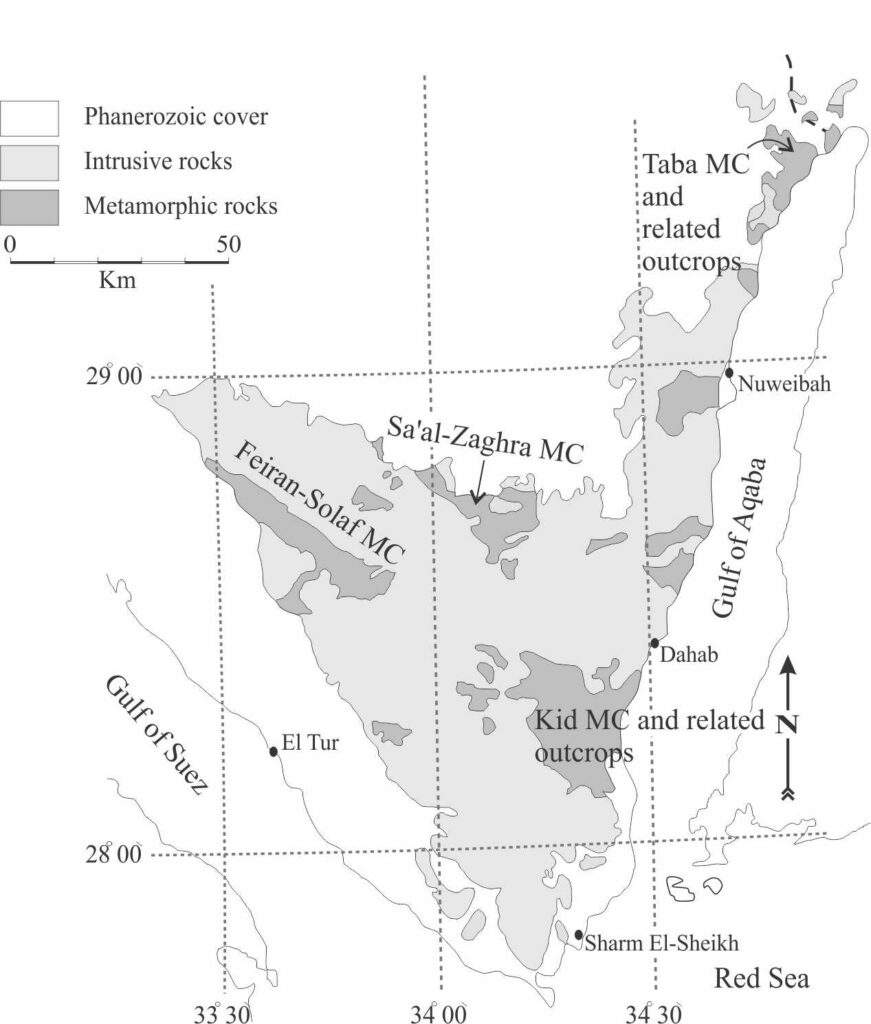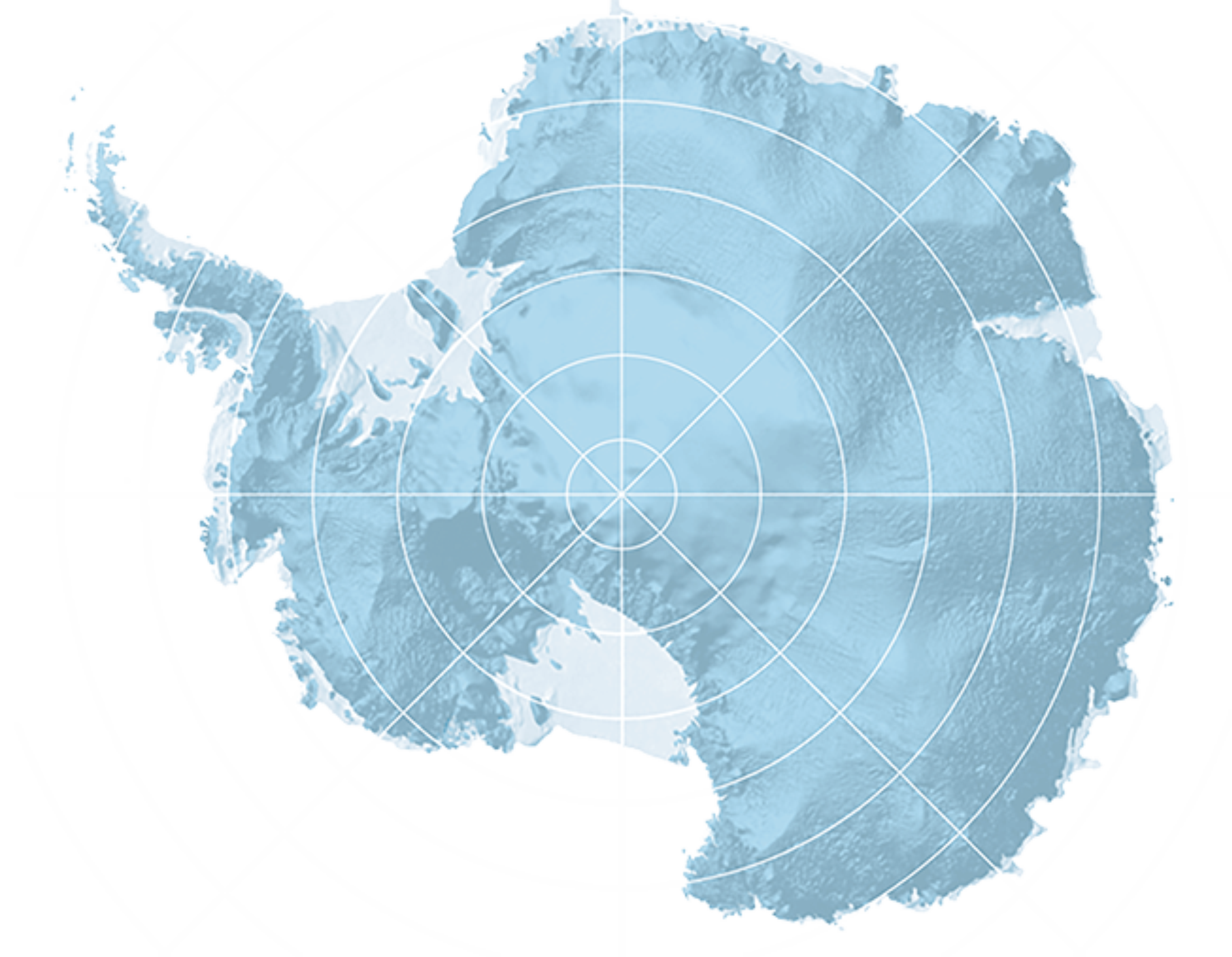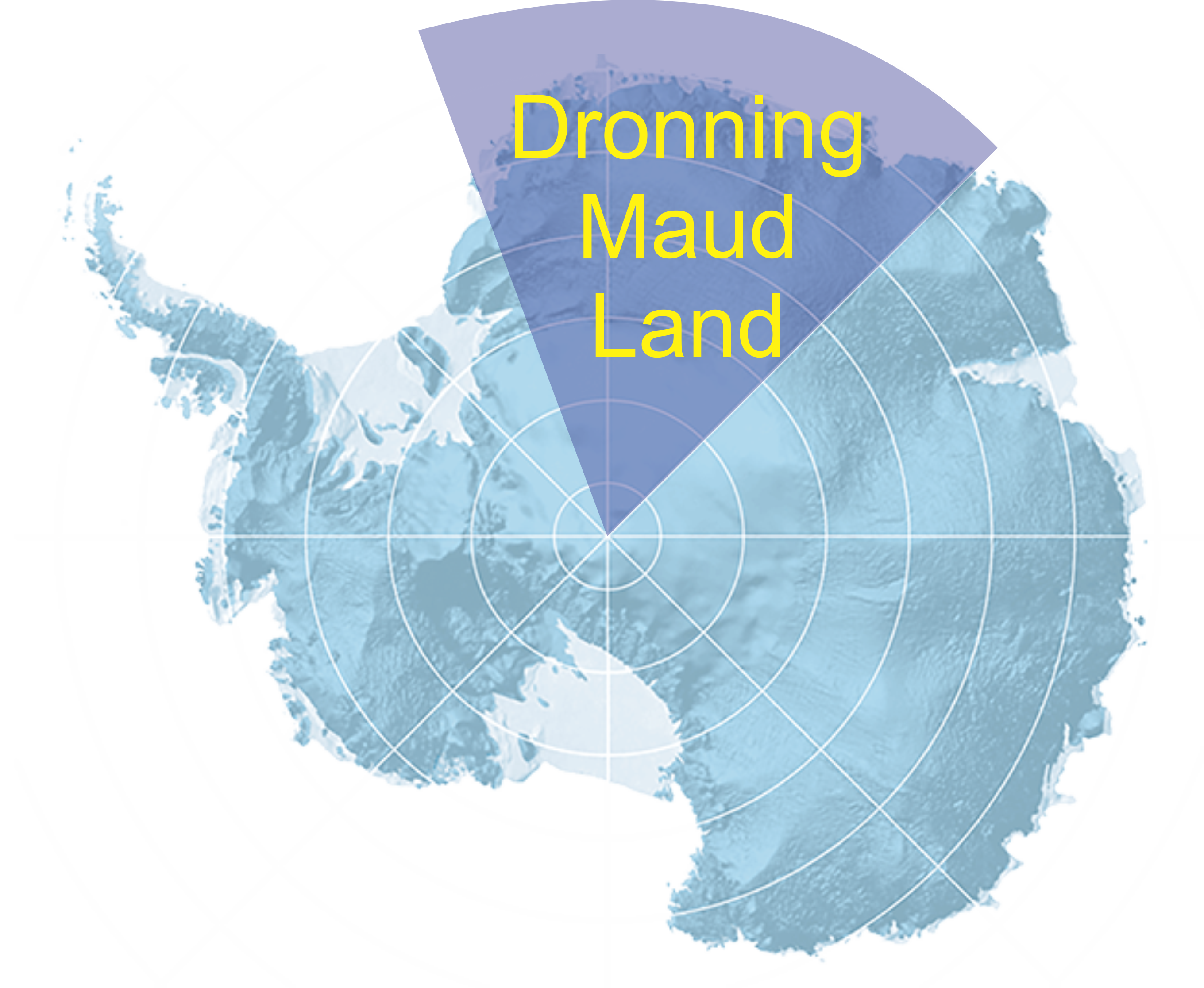بدأت القصة بخسف حدث من حوالي ١٠٠٠ مليون سنة. هذا الخسف كان ناتج من انقسام قارة قديمة تسمي قارة الرودنيا. نتيجة للخسف ونقصان سمك القشرة الارضية بدأت الصخور الرسوبية تسخن بفعل حرارة وشاح الارض (اجزاء من هذة الصخور يمكن ان تجدها في وادي سعال بسيناء). الخسف اتسع مع الوقت وتحول الي جزء من محيط يسمي بالمحيط الموزمبيقي. بعد ٢٠٠ مليون سنة (حوالي ٨٠٠ مليون سنة من اليوم) – بداء المحيط الموزمبيقي يٌقُفَلْ وبداء تتكون اقواس جزر بركانية – من تلك الاقواس – قوس جزيرة فيران-سولاف وقوس جزيرة طابا. استمر المحيط الموزمبيقي بالانغلاق وكان نتيجة لهذا تصادم قوس فيران-سولاف بقوس طابا (حدث هذا من حوالي ٦٣٢ مليون سنة). بعد ٣٢ مليون سنة انفصل جزء من وشاح الارض الملتصق بالقشرة الارضية – نتيجة لذلك اخذت الصهارة بالارتفاع وتسخين الصخور.
هذا ملخص ٥٠٠ مليون سنة من تاريخ سيناء من خسف الرودينيا الي بداء خسف الجندونا. الصخور الموجودة في وادي فيران – سولاف – وادي سعال – منطقة طابا ووادي الكد شاهدة علي هذا التاريخ المعقد
القصة منشورة حديثا كفصل في كتاب جيولوجية الدرع المصري النوبي
The metamorphic rocks of the Sinai Peninsula cover about one-third of the Precambrian basement exposures and are preserved in four isolated metamorphic complexes (Feiran–Solaf, Kid, Sa’al-Zaghra, and Taba metamorphic complexes), separated by large volumes of granitic intrusions. The metamorphism and structural setting of these complexes are well studied, though their geochronology, and consequently their tectonic evolution, remains a matter of controversy. This chapter documents the ongoing efforts to establish correlations between the Sinai metamorphic complexes, in order to clarify their interrelations and reveal the stages of tectonic evolution of the Sinai Peninsula in the northern Arabian–Nubian Shield. Previous works dealing with the petrology, metamorphism, deformation phases, and radiometric dating are discussed and used to present a complete tectonic model for the Precambrian of the Sinai Peninsula. This tectonic model is divided into five stages of evolution, lasting almost 500 Myr, from the foundering of the Rodinia supercontinent to the lithospheric delamination stage that occurred during a late stage of the Pan-African orogeny. The first tectonic stage is the Rodinia breakup (1100–838 Ma) which is recorded in the Sa’al-Zaghara metamorphic complex as S1 extension-related shear zones heated to upper amphibolite facies conditions by syn-kinematic red granite intrusions. The second tectonic stage is represented by formation of two distinct volcanic arcs—the Feiran volcanic arc and the Taba volcanic arc, which were developed in the interval 805–745 Ma, as a result of the closing of the Mozambique Ocean. The third tectonic stage is an arc–arc collision stage (632–620 Ma), during which the Feiran–Solaf and Taba metamorphic complexes achieved peak metamorphic conditions at crustal depths of 28–30 km, in a compressional tectonic setting. Escape tectonics characterized the fourth tectonic stage (630–610 Ma), involving Najd Fault-related exhumation of the metamorphic rocks to depths of about 14 km. Later in this stage the metamorphic complexes were intensively intruded by large volumes of calc-alkaline and alkaline granites, followed by crustal cooling. In conjunction with the tectonic evolution of the Najd Fault System, lithospheric delamination and slab break-off occurred during the fifth tectonic stage (620–593 Ma), leading to opening and subsequent closing of a back-arc basin in the Kid complex. The thermal event associated with the formation of the back-arc basin resulted in an anticlockwise P-T metamorphic history and eruption of *600 Ma bimodal volcanics.
The story was recently published as a chapter in the book “The Geology of the Egyptian Nubian Shield”.
I had the honor of doing this in cooperation with my friends Mahmoud Hassan, and Abdel-Rahman Fowler
For citation: Hassan M., Abu-Alam T.S., Fowler A. (2020). The Sinai Metamorphic Complexes from Rodinia Rifting to the Gondwana Collision. In: Z. Hamimi et al. (eds.), The Geology of the Egyptian Nubian Shield, Regional Geology Reviews, https://doi.org/10.1007/978-3-030-49771-2_4
To download the chapter, please go to: https://link.springer.com/chapter/10.1007%2F978-3-030-49771-2_4
If you have no access, please drop me an email and it will be my pleasure to send you a digital copy.







